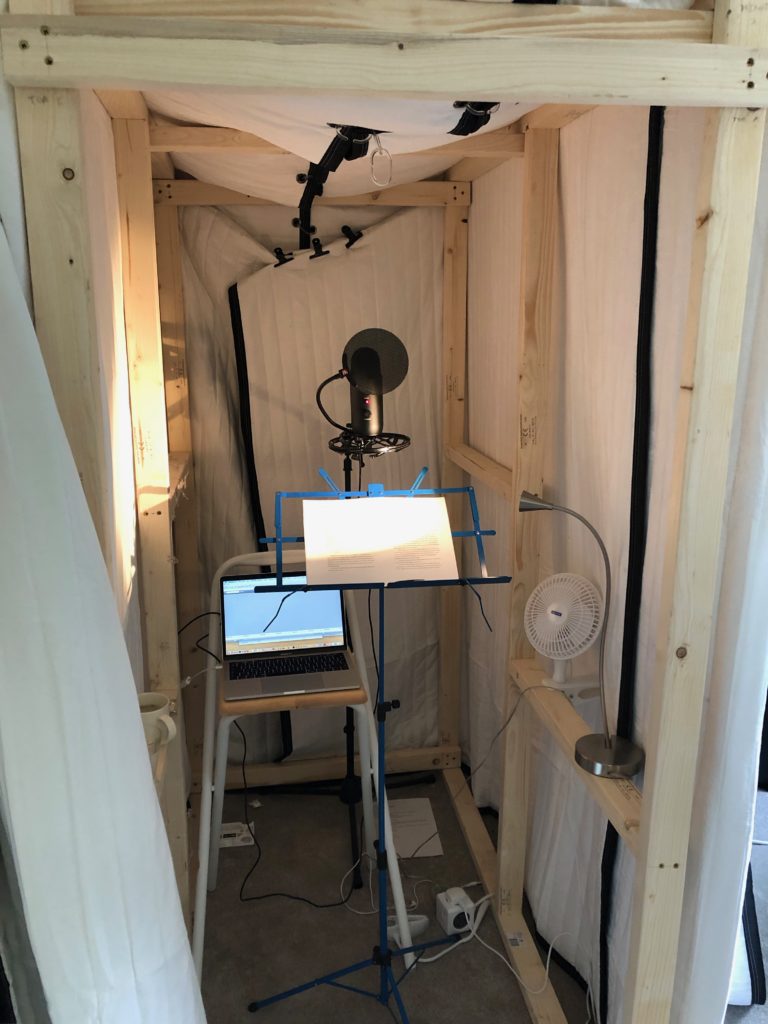7 Lessons Learned From Over 10 Million Downloads Of The Creative Penn Podcast
Description
The Creative Penn Podcast just hit 10 million downloads as reported by my audio host, Blubrry!
The podcast is also the main content on my YouTube channel @thecreativepenn, which has had over 3.9 million views, so the total could be closer to 14m. I'm pretty happy with that, so thanks for listening!
Here are some fun stats, and then I share 7 lessons learned that are also applicable for authors and other creatives.
- Start where you are and improve your craft, tools, and technology over time
- Focus on value for the listeners (or readers)
- Everyone starts with no audience, no email list — and no clue!
- It's all about the relationships you build along the way
- People want to know about you. Decide on your boundaries — before you're forced to.
- Podcasting (or being an author) can be a viable business — if you design it that way.
- You will only sustain what is ‘worth it' to you over the long term. Persistence and time in the market make a big difference.
You can find The Creative Penn Podcast on your favourite podcast app, or the backlist and links are here.
The Creative Penn Podcast Stats
My first episode went out on 15 March 2009, and there are now 775 episodes of the podcast. Links to all at TheCreativePenn.com/podcast.
The show has been downloaded in 229 countries with the top three countries being the USA (61%), UK (12%), and Australia (7%), and the most surprising being 2 downloads from Antarctica!
<figure class="wp-block-image size-full">
 </figure>
</figure>The four most downloaded episodes through Blubrry are as follows:
- Writing fiction and improving your fiction book description with Michaelbrent Collings (28,264 downloads)
- How to use mystery to hook your readers with Jonah Lehrer (28,215)
- Tips for indie author success and 20BooksTo50K with Craig Martelle (28,199)
- Author mindset: Strengths for writers with Becca Syme (27,786)
The four most watched/listened to on YouTube are quite different:
- Improve your dialogue with James Scott Bell (75,200)
- How to sell a million books with CJ Lyons (59,689)
- How to write a novel with the snowflake method with Randy Ingermanson (54,209)
- Story Engineering with Larry Brooks (52,520)
Why are these numbers so different? An audio podcast generally gets a relatively stable number of people listening every week, so there is less variability in listening numbers. YouTube is based on search and algorithms, so some videos get a LOT of views and others get almost nothing.
7 Lessons Learned From Over 10 Million Podcast Episode Downloads
(1) Start where you are and improve your craft, tools, and technology over time
You don't need to know everything in advance in order to write a book, or publish, or start a podcast. Just get started and learn and adapt along the way.
I recorded my first podcast interview in March 2009 over a landline, which I put on speakerphone, next to which I placed a handheld digital audio recorder.
I didn't really know what I was doing, but despite my nerves, I was still able to interview a breakout self-published author in the Australian book scene, Rachael Bermingham. (I lived in Brisbane, Australia at the time.)
I've always done extensive research on my guests and provided questions in advance, but my interview skills have definitely improved since then — both as a host and a guest. Everything gets better with practice, and that includes your writing, too!
My tools have also changed. My recording went from a phone to Skype to Zoom and now Riverside.fm, and I've upgraded my microphone (and pop filter) several times.
I used to just record in any room with the accompanying echo noises Later, I moved into a padded cupboard, and now I have a home audio booth where I record my solo episodes, weekly introduction, and my audiobooks.
<figure class="aligncenter size-large is-resized">
 <figcaption class="wp-element-caption">Joanna Penn's home audio sound booth</figcaption></figure>
<figcaption class="wp-element-caption">Joanna Penn's home audio sound booth</figcaption></figure>My editing tools went from Audacity to Amadeus Pro, and I now use Descript.com to edit the main audio before mastering with Amadeus Pro and Auphonic.
I still use the same WordPress plugin, Blubrry, which is one of the oldest and most reputable independent podcast hosts. I have always paid for hosting the feed, first on AWS and then on Blubrry itself. As ever, I really love my independence!
If you're not paying for a product, then question how that company is making money. Is your content actually the product? (as is the case for most social media platforms).
<figure class="wp-block-image size-full">
 <figcaption class="wp-element-caption">the logo has changed over the years as well, both for the podcast and my brand. Get started and reinvent as you go.</figcaption></figure>
<figcaption class="wp-element-caption">the logo has changed over the years as well, both for the podcast and my brand. Get started and reinvent as you go.</figcaption></figure>(2) Focus on value for the listeners (or readers)
If you try to write a book in a market you don't read, you will likely get it wrong and readers won't resonate with the content or buy more from you.
If you start a podcast without an understanding of what the audience want, then you will fail in a similar way. But you can avoid this by BEING the audience you seek to connect with.
When I started The Creative Penn Podcast in 2009, I had self-published a couple of non-fiction books, and I'd learned so much from those initial failures that I wanted to share what I'd learned.
<figure class="aligncenter size-full is-resized"><img decoding="async" width="904" height="984" src="https://www.thecreativepenn.com/wp-content/uploads/2024/10/Joanna-Penn-2009-Brisbane-Australia.png" alt="" class="wp-image-36533" style="width:410px;height:auto" srcset="https://www.thecreativepenn.com/wp-content/uploads/2024/10/Joanna-Penn-2009-Brisbane-Australia.png 904w, https://www.thecreativepenn.com/wp-content/uploads/2024/10/Joanna-Penn-2009-Brisbane-Australia-276x300.png 276w, https://www.thecreativepenn.com/wp-content/uploads/2024/10/Joanna-Penn-2009-Brisbane-Australia-768x836.png 768w" s





